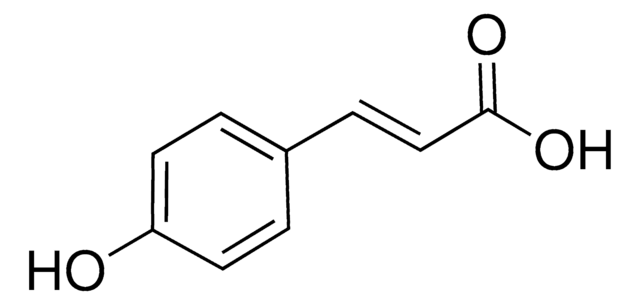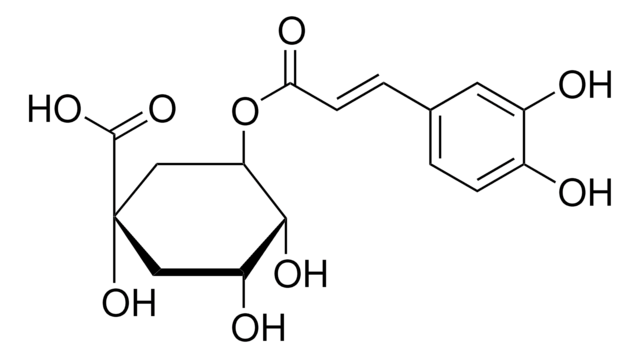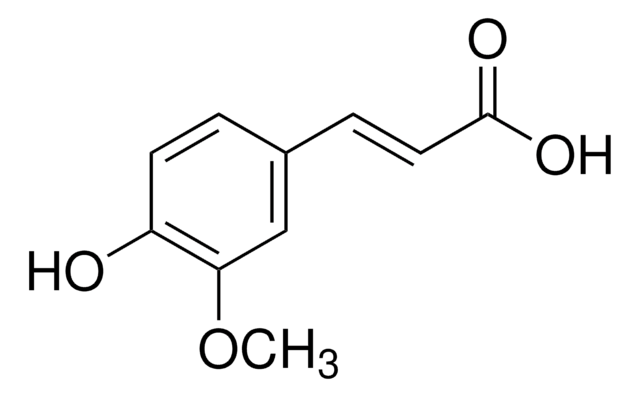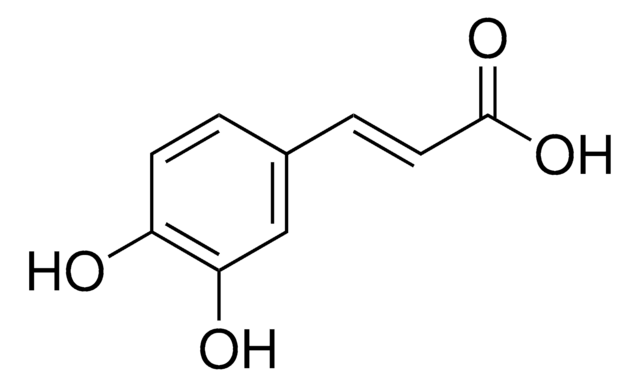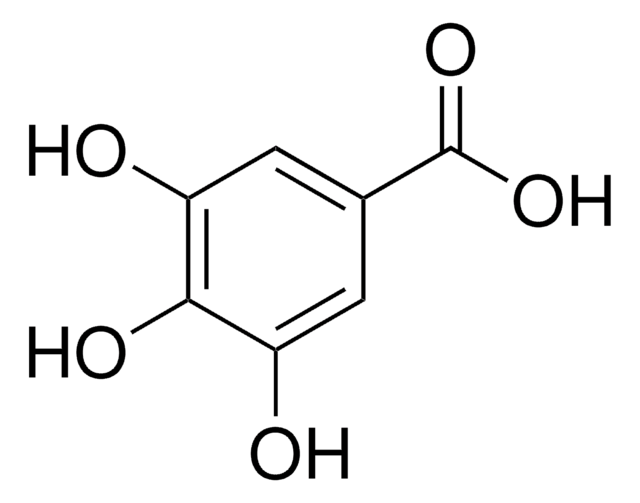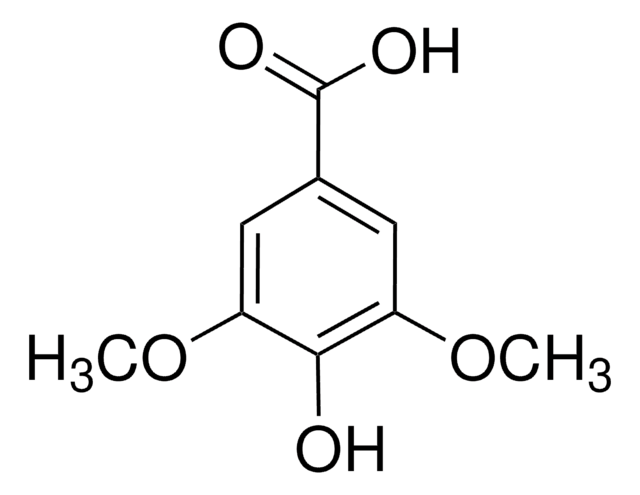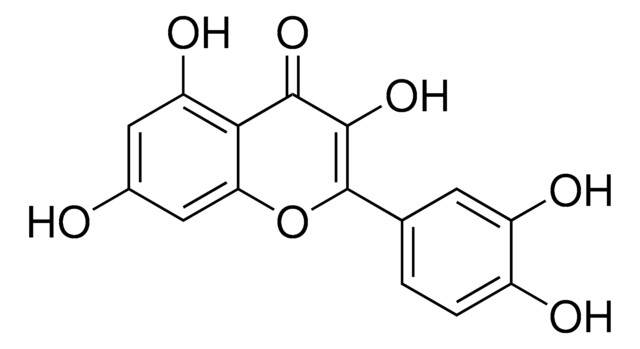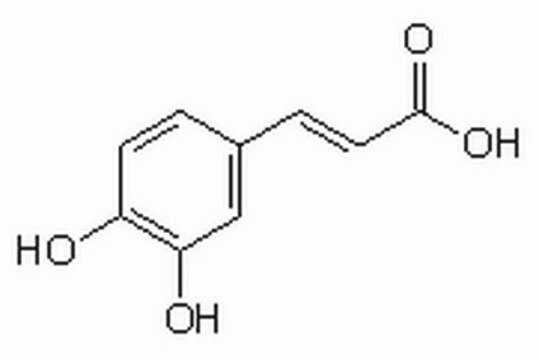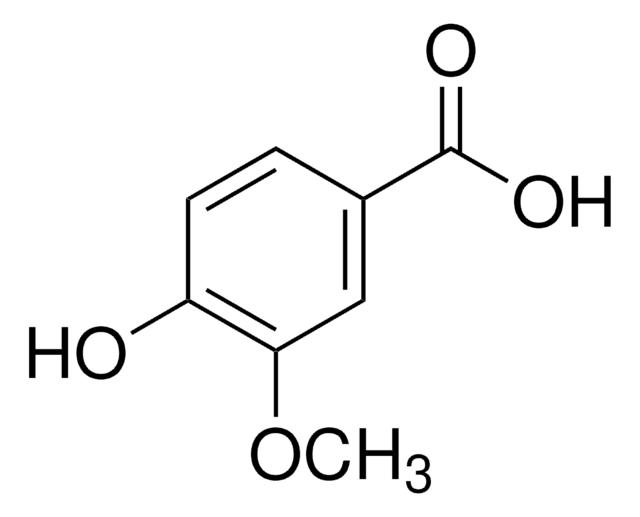C0625
Caffeic acid
≥98.0% (HPLC)
Synonym(s):
3,4-Dihydroxybenzeneacrylic acid, 3,4-Dihydroxycinnamic acid, 3-(3,4-Dihydroxyphenyl)-2-propenoic acid
About This Item
Recommended Products
Quality Level
assay
≥98.0% (HPLC)
form
powder
mp
211-213 °C (dec.) (lit.)
solubility
ethanol: 50 mg/mL
application(s)
metabolomics
vitamins, nutraceuticals, and natural products
SMILES string
OC(=O)\C=C\c1ccc(O)c(O)c1
InChI
1S/C9H8O4/c10-7-3-1-6(5-8(7)11)2-4-9(12)13/h1-5,10-11H,(H,12,13)/b4-2+
InChI key
QAIPRVGONGVQAS-DUXPYHPUSA-N
Gene Information
human ... ELA2(1991)
rat ... Alox5(25290)
Looking for similar products? Visit Product Comparison Guide
Related Categories
General description
Application
Biochem/physiol Actions
Features and Benefits
related product
signalword
Warning
hcodes
Hazard Classifications
Carc. 2
Storage Class
11 - Combustible Solids
wgk_germany
WGK 3
flash_point_f
Not applicable
flash_point_c
Not applicable
ppe
Eyeshields, Gloves, type P3 (EN 143) respirator cartridges
Certificates of Analysis (COA)
Search for Certificates of Analysis (COA) by entering the products Lot/Batch Number. Lot and Batch Numbers can be found on a product’s label following the words ‘Lot’ or ‘Batch’.
Already Own This Product?
Find documentation for the products that you have recently purchased in the Document Library.
Customers Also Viewed
Protocols
HPLC Analysis of Polyphenols in Nero d'Avola Red Wine on Discovery® HS C18 (UV 280 nm)
Protocol for HPLC Analysis of Flavonoids on Ascentis® RP-Amide
Related Content
DISCOVER Bioactive Small Molecules for Nitric Oxide & Cell Stress Research
We offer a variety of small molecule research tools, such as transcription factor modulators, inhibitors of chromatin modifying enzymes, and agonists/antagonists for target identification and validation in gene regulation research; a selection of these research tools is shown below.
Our team of scientists has experience in all areas of research including Life Science, Material Science, Chemical Synthesis, Chromatography, Analytical and many others.
Contact Technical Service